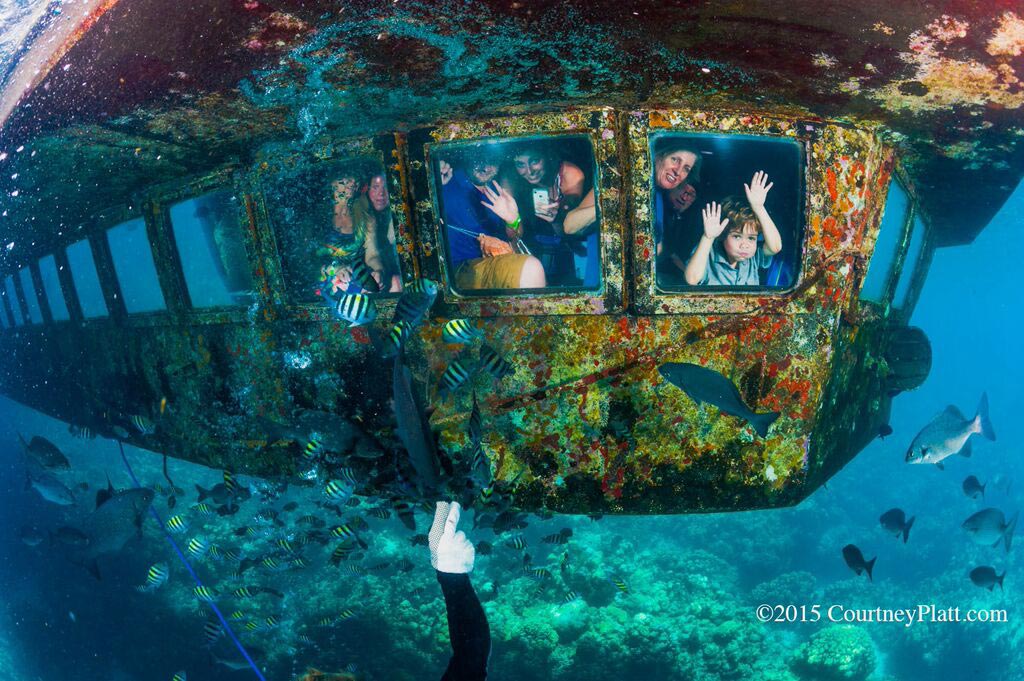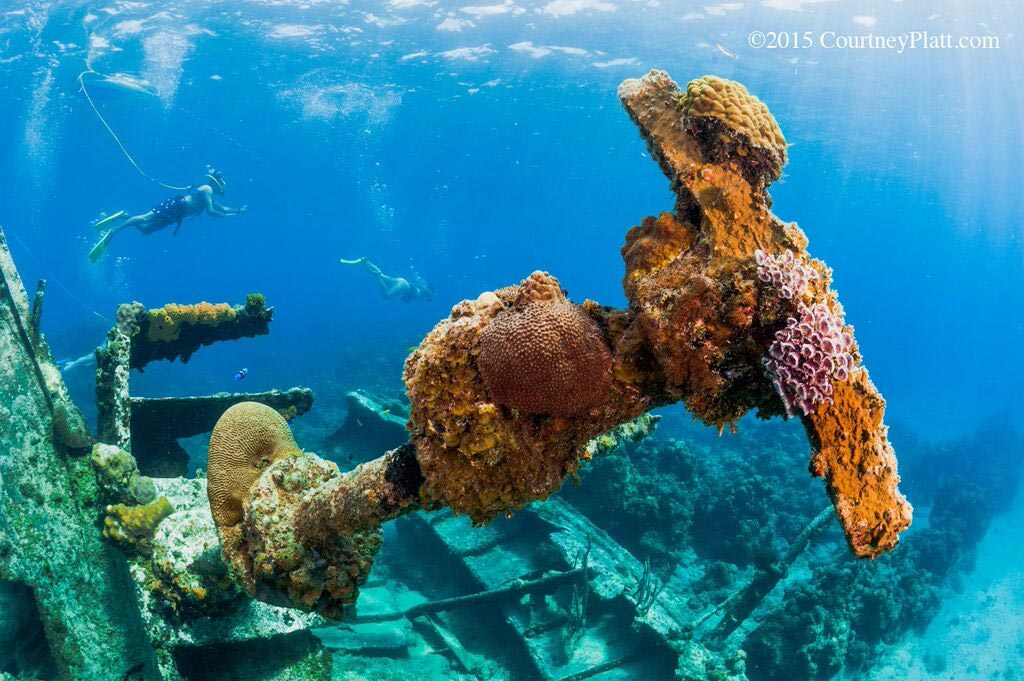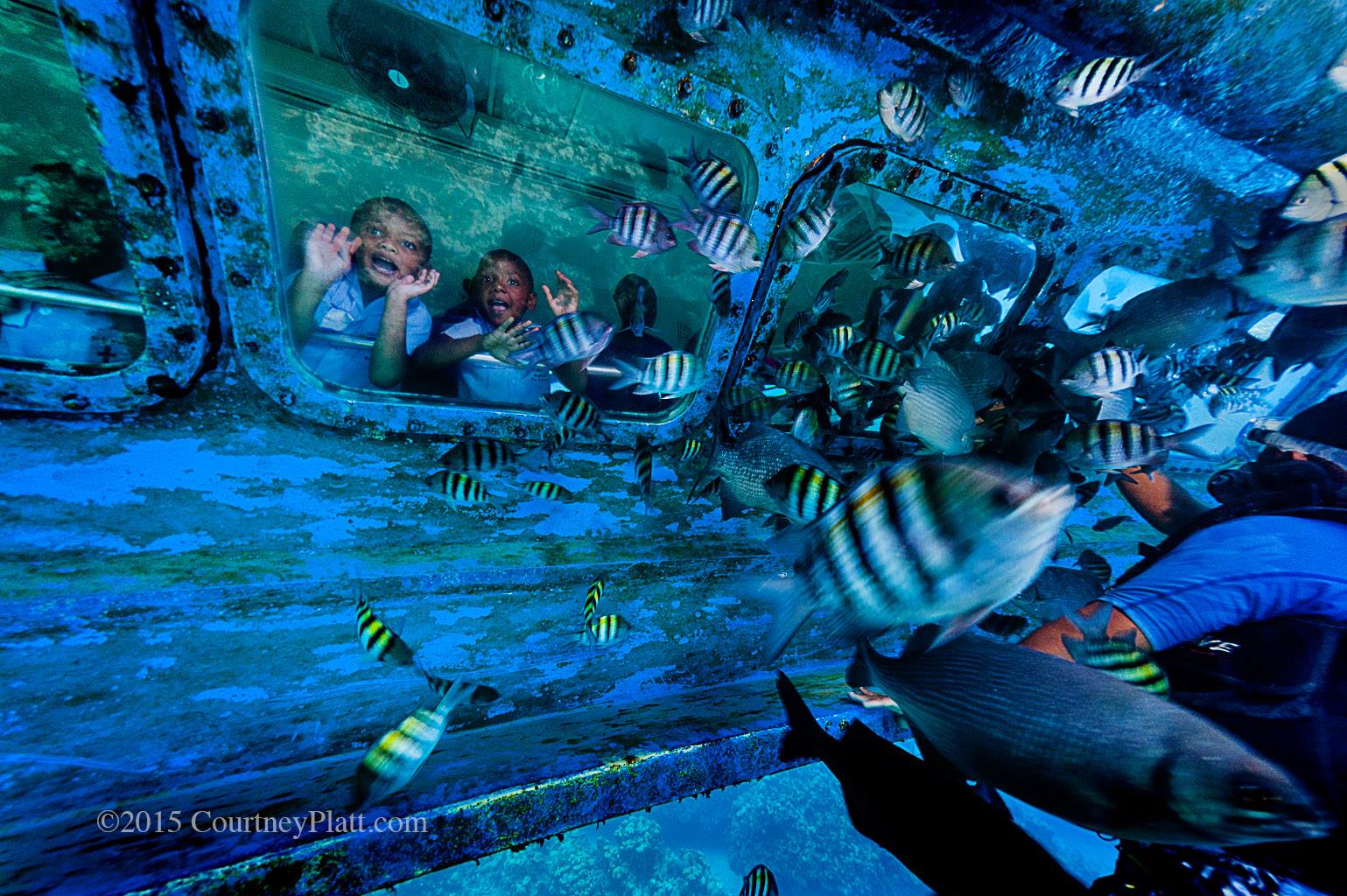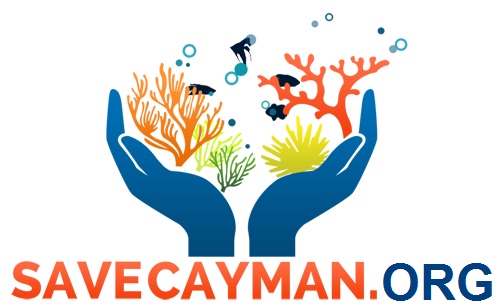Marine Life & Conservation
Head of Cayman Islands Department of Environment Urges Extreme Caution before Moving Forward with Controversial Cruise Berthing Plan
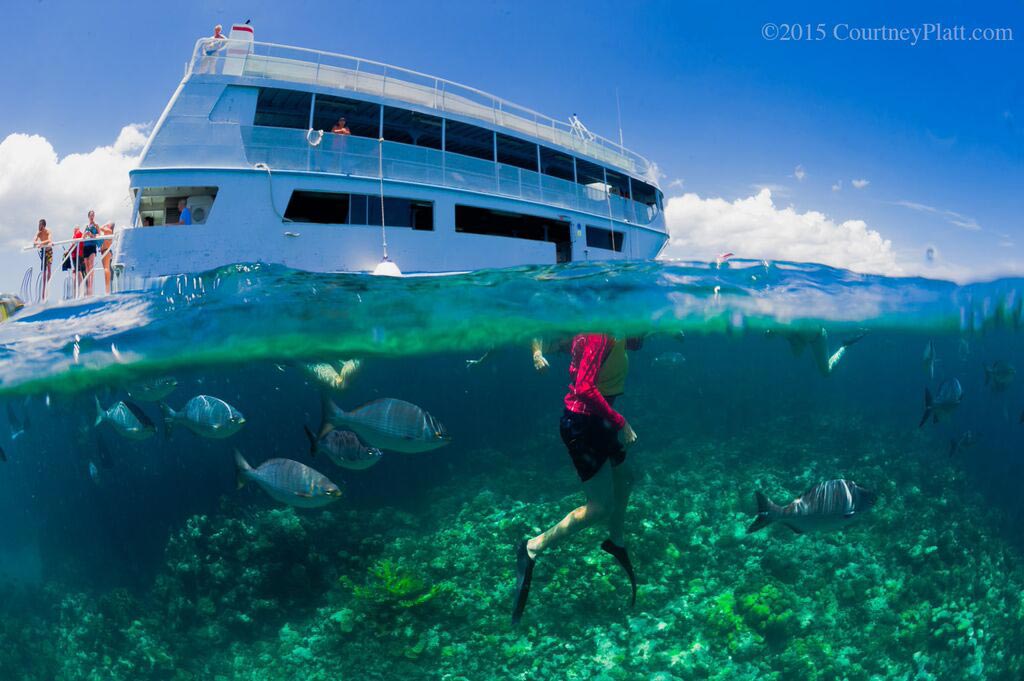
Since its release in early June, an Environmental Impact Statement (EIS) has been at the center of the heated debate over economic and environmental costs associated with the proposed port in George Town Harbor. Director of the Cayman Islands Department of the Environment Gina Ebanks-Petrie, who also headed the Environmental Assessment Board (EAB) that coordinated the impact study, is urging extreme caution before moving ahead with the project and pleading with decision makers and the public to take a closer look at what’s at stake.
The EIS projects that 15 acres of protected coral reefs will be destroyed by construction and dredging, and another 15 acres are at risk. Lost will be the exceptional underwater visibility that Cayman is world-renowned for. George Town Harbour is one of the few working ports in the Caribbean, if not the only one, with crystal clear water and vibrant coral reefs within easy access of the cruise ships’ anchorage.
The reefs, which include Soto’s Reef, Eden Rock and the Wreck of the Balboa, are so unique because it is rare to find such well developed, high relief reefs so close to, and easily accessible from shore. These reefs have also been protected under the Marine Parks system for over 25 years so fish life is abundant and diverse. These are two of the main factors which contribute to a bustling watersports scene in the harbor. Scuba diving, snorkeling, submarine trips, glass bottom boat excursions are offered primarily for cruise ship passengers.
“If the additional 15 acres of reefs disappear, or are no longer useable because they are dead or water clarity is so poor, it will be extremely difficult to find other similar sites which could easily absorb the displaced businesses and visitors, particularly given the cruise ships’ limited time in port,” says Ebanks-Petrie. “Possible alternative options for snorkeling, like Stingray City, are already over-subscribed and under tremendous stress as a result.”
The loss of these reefs has huge implications for the Cayman Islands on an international level. The Department of Environment has heard from international agencies and individuals during the public consultation process, and Gina Ebanks-Petrie says the vast majority urged the country not to proceed with the project because of the permanent and irreversible damage. For example, the President and CEO of PADI Worldwide “implores the Cayman Islands Government to cease plans to initiate this project and seek alternative solutions to mitigate the situation and not destroy the priceless natural underwater assets belonging to Grand Cayman Island”.
“In addition to the obvious impact of the loss of these world-famous dive sites on our dive tourism product, the biggest impact will likely be on our reputation as a jurisdiction with a long history of valuing and prioritizing the protection of its marine environment,” she said.
“Coral reefs all over the world are under serious threat on various fronts: coastal development, over-fishing, sedimentation, climate change, etc. Marine scientists are agreed that we need to take all possible steps to protect remaining reefs at the same time as taking corrective action to address the threats, both locally and globally,” added the DOE director.
Cayman’s watersports operators and local environmentalists, alarmed by the projected damage to the reefs and dive sites have organized under the banner of SaveCayman.org to fight the project and raise awareness in the community. Dock supporters point to mitigation options outlined in the EIS report, but Ebanks-Petrie cautions against misinterpreting the report.
“The pro-port side seems to take comfort from these mitigation options, but what is being missed, or glossed over, is that the environmental study also assesses the effect of those measures, and the consultants judge that they will have little or no effect on reducing the severity of the impacts,” she said. “The public and decision makers need to remember that “mitigation” of an impact does not equal complete removal of the impact, and they should focus on the severity of the predicted residual impact i.e. those impacts which remain even after the use of mitigation measures.”
“For example, the consultants score the impact of dredging on water quality in George Town Harbour (GTH) as a Significant negative impact (-D) and this remains a Significant Negative impact (-D) after the application of the recommended mitigation measure – the installation of silt curtains,” she explains. The same applies to the possible relocation of the historic Wreck of the Balboa.
Consultants classify the destruction of coral reef during dredging in the highest tier of negative impacts – a Major negative impact (-E). Following implementation of the recommended mitigation measure – the coral relocation programme – it is still classified as a Significant Negative Impact (-D).
“Even with these proposed mitigation measures, that come with a significant price tag, the resulting situation is still extremely dire, and this seems to be lost in the sound bites being heard in the news,” said Ebanks-Petrie.
“The Department of Environment fully acknowledges the contribution that cruise tourism makes to the economy, and the need to upgrade and improve the arrival and departure experience of cruise visitors. However, after careful consideration of the environmental losses and the risk to the overall tourism product associated with berthing facilities, our view is that a scheme of appropriate landside enhancements would offer the best solution.”
Ebanks-Petrie says the Environmental Statement has attempted to place a dollar value on the economic losses associated with the destruction of the George Town Harbour reefs and the Statement recommends that these preliminary estimates are appropriately incorporated into the updated Business Case.
“The Environmental Impact Assessment and Environmental Assessment Board’s review of it are stunningly clear and shows that the government should not approve the plan as described,” says Dr. Ellen Prager, marine scientist and author who has been outspoken against the project. “The reefs and the wreck lost to dredging and sedimentation associated with dredging cannot be relocated or transplanted, and it is unclear what other unintended consequences to other nearshore habitats and environments will occur.”
Ebanks-Petrie says moving forward, given the projected cost of the project, it is critical that the predicted economic benefits of the berthing facility are based on real data and factual information and that the economic business case does not rely solely on assumptions, speculation and the opinions of those persons directly involved in the cruise tourism industry.
“From where I sit, the economic business case does not appear to have been held to the same standard of actual data collection and robust analysis and scrutiny as the environmental impact assessment; I see this as a significant problem for decision-makers,” said the head of the Department of Environment.
“It is our mission to inform and educate the public about Cayman’s fragile environment and to try to ensure that decisions made today, which will impact future generations, are based on accurate facts,” says Keith Sahm who is spearheading Save Cayman. “Once the decision is made, Cayman will have to deal with the consequences.”
About Save Cayman
Save Cayman (www.savecayman.org) is a grassroots organization of individuals who share a mission to protect the underwater environment of the Cayman Islands, while promoting sustainable tourism for future generations. It was formed by concerned individuals responding to an Environmental Impact Assessment (EIA) that projected the destruction of coral reefs in advance of the government-proposed cruise berthing facility in George Town harbour.
Marine Life & Conservation
Paul Watson Released as Denmark Blocks Japan’s Extradition Bid

Renowned anti-whaling activist Paul Watson has been released from custody in Greenland after spending five months in detention. Denmark’s Justice Ministry rejected Japan’s request for his extradition, citing insufficient guarantees that his time already served in custody would be credited against any potential sentence.
The 74-year-old Canadian-American was arrested on July 21 in Nuuk, Greenland’s capital, when his ship docked to refuel. His arrest was based on a 2012 Japanese warrant related to a 2010 encounter in Antarctic waters. Japan alleged Watson obstructed operations and caused damage to a whaling research ship during efforts to disrupt illegal whaling. Watson has consistently denied these claims, maintaining his commitment to marine conservation.
Denmark, which oversees extradition matters for Greenland, concluded that while the legal conditions for extradition were met, the lack of assurances from Japan regarding time-served credit made extradition untenable.
In a video shared by his foundation, Watson expressed gratitude and relief, saying, “After five months, it’s good to be out… and good to know they’re not sending me to Japan.” He added that the most difficult part of his time in custody was being separated from his two young sons.
Watson is a pioneering figure in marine conservation, known for founding the Captain Paul Watson Foundation in 2022 after decades of activism with the Sea Shepherd Conservation Society. His bold efforts to defend marine life have earned him widespread support, including from celebrities and conservationists. His work has also been featured in the acclaimed reality TV series Whale Wars.
Watson’s lawyer, Jonas Christoffersen, praised the decision, stating, “We are happy and relieved that Paul Watson is now free.” He added that Watson is eager to reunite with his family and continue his vital work.
The arrest occurred while Watson’s vessel, the M/Y John Paul DeJoria, was en route to the North Pacific with a team of 26 volunteers to intercept a Japanese whaling ship. His foundation described the arrest as politically motivated and emphasized that Watson’s actions were focused on ending illegal whaling practices.
Japan resumed commercial whaling in 2019 after leaving the International Whaling Commission, asserting that whale meat is a cultural tradition. Conservationists, however, continue to challenge these practices, highlighting their impact on marine ecosystems.
Despite the challenges, Watson remains steadfast in his mission to protect marine life and bring attention to whaling practices. His dedication to ocean conservation has made him a globally respected advocate for the environment.
Marine Life & Conservation
12 Days of Zero-Waste Fish-mas

This holiday period, the Marine Conservation Society, the UK’s leading ocean membership charity, invites you to make some simple changes to eating fish this Christmas to help our seas.
Dr Kenneth Bodles, Head of Fisheries and Aquaculture at the Marine Conservation Society, said, “During the festive season, our consumption increases, but so does waste. Sustainability isn’t just about where food comes from – it’s also about how you use it. By reducing waste and making the most out of your seafood, you’re not only taking steps to be more ocean-friendly, but can also help to cut costs during what is often one of the most expensive times of the year”.
The Marine Conservation Society has compiled twelve tips on how to consume seafood sustainably with zero-waste this Christmas:
Buy whole fish instead of fillets
Instead of fillets, consider buying whole fish such as salmon, hake, or lemon sole. By adopting a “nose to tail” approach with cooking, whole-baked fish not only feeds a crowd, but also helps to minimise waste and maximise sustainability by using up every part of the animal, including bones, skin, and fat.
Make fish stock
Leftover fish bones or shells can be put to good use by boiling them to make a nourishing fish stock or bisque. This can be frozen and preserved for later use and makes for a flavourful base in a soup.
Make your own fish pâté
Avoid waste by turning leftover fish, such as smoked mackerel or salmon, into a delicious pâté by blending with cream cheese and lemon. Perfect when paired with crackers.
The sustainability of salmon and mackerel varies depending on where and how it is caught or farmed. For more information on green-rated options, check the charity’s Good Fish Guide.
Buy frozen
By purchasing seafood that is frozen or vacuum-packed, this helps to reduce waste by extending the shelf life of your food.
Fish pie
If you’re wondering what to do with leftover cooked fish, why not opt for a classic fish pie with mashed potatoes, leeks, and a cheesy sauce? A sure crowd pleaser on Boxing Day.
Use the head
Don’t forget the fish head! The meat is incredibly tender and flavourful. The charity recommends a cod’s head curry or recreating Fallow’s renowned cod’s head in siracha butter.
By stretching your ingredients further, not only is this a more sustainable way to enjoy seafood, but also cost-effective by repurposing leftovers and cooking creatively.
Boxing Day brunch
Mix leftover kippers or smoked salmon with scrambled eggs for a tasty, zero-waste, Boxing Day brunch.
For best choice, make sure you buy kippers, or herring, from the North Sea and the North Irish Sea.
Zero-waste storage
A top tip from the Marine Conservation Society to avoid waste is freezing fish offcuts to save for future use.
Crisp up the skin
Even leftover fish skin can be turned into a quick savoury snack by crisping it up in an air fryer with a little olive oil and salt.
Anchovies two ways
Leftover anchovies can either be blended with butter to make a delicious anchovy butter or tossed into pasta for a hit of umami flavour.
The charity recommends opting for anchovies caught in the Bay of Biscay for best choice.
Fishcakes
For an easy, zero-waste meal, leftover seafood trimmings can be mixed with mash and fried in breadcrumbs to make fishcakes.
Pickled mussels
Try pickling mussels in 1:1 vinegar and water, with a dash of sugar for a sustainable, zero-waste snack that can be enjoyed well beyond the festive season.
Mussels farmed in the UK are a seafood superhero. Grown using low-impact methods and harvested by hand, they get all the food they need from the sea around them. This makes them one of the most sustainable, ocean-friendly, and cost-effective seafood options.
Players of People’s Postcode Lottery have raised £6.6M towards the Marine Conservation Society’s vital work in making seafood more sustainable.
Laura Chow, Head of Charities at People’s Postcode Lottery, said: “Fish is a festive favourite for many, but making sustainable choices when it comes to how we buy and eat seafood makes all the difference for our ocean. Support from players of People’s Postcode Lottery has helped the Marine Conservation Society further its sustainable seafood work, so that we can all enjoy healthier, better protected seas.”
The Marine Conservation Society encourages you to make sustainable seafood choices a year-round habit, not just for Christmas. To check how sustainable the seafood on your plate is, you can visit the charity’s Good Fish Guide. The Guide helps consumers and businesses identify the most sustainable seafood using a simple traffic light system, based on where and how species are caught or farmed. Green is the best choice, amber means improvements are needed, and red indicates fish to avoid buying.
Zero-waste gift idea
Why not embrace a zero-waste Christmas by gifting a membership to support marine conservation? It’s a meaningful, low-waste gift that helps protect our ocean for generations to come. Memberships start from as little as £5 a month – the price of a sandwich and drink from your local coffee shop.
Find the latest sustainable seafood advice for wild-caught and farmed seafood on the Good Fish Guide, downloadable to your phone from www.mcsuk.org/goodfishguide.
-

 News3 months ago
News3 months agoIconic SS United States to become the World’s Largest Artificial Reef
-

 Blogs2 months ago
Blogs2 months agoScubaverse Christmas Gift Guide 2024: Day 4
-

 News2 months ago
News2 months agoSanta Divers take the Plunge for Charity
-

 Blogs2 months ago
Blogs2 months agoScubaverse Christmas Gift Guide 2024: Day 1
-

 News3 months ago
News3 months agoDiscover Turquoise Divers and Media Luna Beach & Dive Resort: A Premier Diving and Relaxation Destination in Roatan
-

 Blogs2 months ago
Blogs2 months agoScubaverse Christmas Gift Guide 2024: Day 5
-

 Blogs2 months ago
Blogs2 months agoScubaverse Christmas Gift Guide 2024: Day 2
-

 News3 months ago
News3 months agoToucan Diving at Plaza Beach and Dive Resort Bonaire Introduces PADI Mermaid Training


